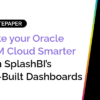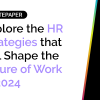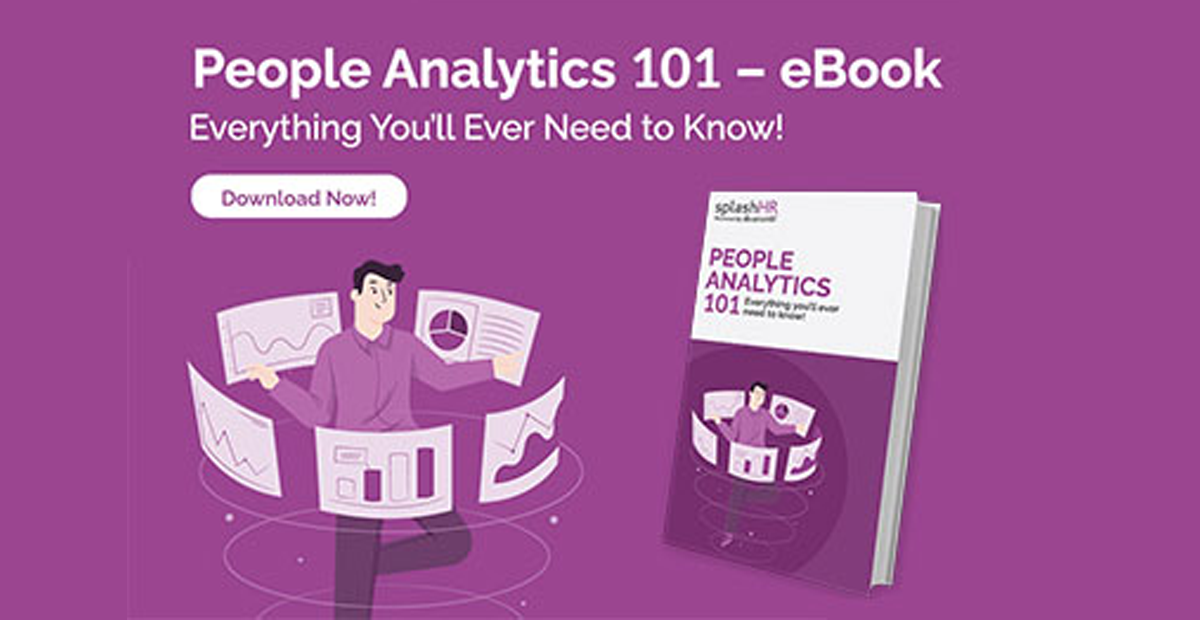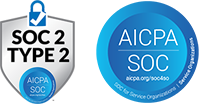CSRD Compliance: 7 Strategic Tips for HR Teams
Explore –
- Introduction to CSRD
- CSRD’s Ripple Effect on HR Teams and Sustainability Reporting
- CSRD and HR Reporting: Key Metrics to Drive Compliance
- Preparing For CSRD: The Way Forward for HR Teams
- Strategic CSRD Preparation Roadmap for HR Teams
- CSRD Reporting Dashboards: Build vs Buy?
- SplashBI for HR Brings Ready Dashboards for CSRD Reporting
Introduction to CSRD
The Corporate Sustainability Reporting Directive (CSRD) represents a significant shift in the corporate reporting landscape. Launched by the European Union (EU), CSRD will take effect from January 2023 and will apply from the financial year 2024. It replaces the previous Non-Financial Reporting Directive (NFRD), expanding sustainability reporting to approximately 49,000 large enterprises and listed SMEs in the EU.
CSRD will apply to EU companies that meet two of these three criteria — having over 250 employees, having a net turnover greater than €40 million, and/or having over €20 million on the balance sheet.
Though entire organizations will be impacted by this change, specifically in reporting and compliance, HR functions and leaders are at the frontline of this seismic change.
CSRD’s Ripple Effect on HR Teams and Sustainability Reporting
CSRD is a game-changer for HR departments, emphasizing the importance of social factors in corporate sustainability reporting. It introduces European Sustainability Reporting Standards (ESRS) customized to EU policies. HR teams must focus on the social reporting standards, notably ESRS S1 — defined within the legislation as ‘Own Workforce.’
Within these, 47 different people metrics related to the workforce — such as diversity, employee engagement, training and development, pay gaps, and turnover — must now be reported. In short, CSRD significantly increases the complexity and scope of HR reporting, and non-compliance could lead to fines of up to 10 million Euros or 5% of annual revenue.
With some companies under the CSRD purview required to start reporting on metrics as early as 2024, HR teams must focus on creating efficient strategic mechanisms to scale up their reporting systems in time for the deadline. While this may seem daunting, we have simplified the process by highlighting key focus areas and a strategic execution roadmap to ensure compliance with the reporting deadline.
CSRD and HR Reporting: Key Metrics to Drive Compliance
CSRD compliance brings an extensive list of metrics to evaluate progress and compliance. However, HR teams must focus on the most critical ones much before the CSRD deadlines hit. Here are some of the key metrics that must be prioritized in the initial phases of preparation:
Headcount:
This is a basic yet crucial metric as it provides an overview of the size and composition of the workforce.
Turnover:
High turnover rates can be indicative of deeper issues within the organization, making this metric essential.
DEI&B (Diversity, Equity, Inclusion & Belonging):
These metrics are increasingly critical in ensuring fair representation and creating a more inclusive work environment.
Training & Skills Development:
Metrics related to the professional development of employees highlight the company’s commitment to nurturing talent.
Health and Safety Indicators:
A safe and healthy work environment is paramount, and these metrics demonstrate the company’s focus on employee well-being.
Work-life Balance:
In the modern work environment, promoting a healthy work-life balance is vital to employee satisfaction and productivity.
Compensation:
Pay equity is a significant factor in maintaining a fair and motivating work environment.
Application/Recruitment:
These metrics provide insights into the company’s ability to attract and retain talent and is a significant success marker for the social component of CSRD.
It is also important to highlight here that the priority should always be collecting, curating, and integrating accurate and meaningful data to help drive business decisions. Together, these metrics provide valuable insights into workplace dynamics that can have far-reaching impacts beyond CSRD’s reporting requirements.
Preparing For CSRD: The Way Forward for HR Teams
When is CSRD Coming into Effect?
Keeping in mind the expanded scope of reporting under the new directive, implementation of the CSRD will be rolled out in phases as follows:
1 January 2024:
For companies already reporting in line with NFRD (reporting in 2025 on 2024 data) — applicable for public companies, banks, and insurance firms with 500+ employees.
1 January 2025:
For large companies that are not currently subject to NFRD (reporting in 2026 on 2025 data).
1 January 2026:
For listed SMEs, small and non-complex credit institutions, and captive insurance undertakings (reporting in 2027 on 2026 data).
1 January 2028:
For third-country undertakings with net turnover above 150 million in the EU, provided they have at least one subsidiary (reporting in 2029 on the 2028 financial year).
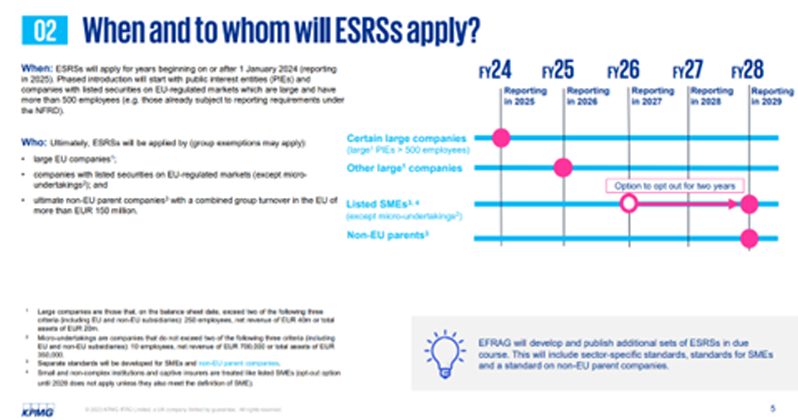
Strategic CSRD Preparation Roadmap for HR Teams
Here are some critical steps companies can take in the lead-up to the deadline to efficiently navigate the requirements without becoming overwhelmed.
1. Take a Phased Approach
For successful CSRD implementation, adopting a phased approach to collecting the right metrics and Key Performance Indicators (KPIs) is recommended. A comprehensive understanding of your organizational structure, including gender, payroll, ethnicity, and generational workforce composition, serves as the foundation for this process. This step-by-step approach aids in gradually building up an extensive database of essential metrics without overwhelming your system or personnel.
2. Establish a Cross-functional Team
A pivotal aspect of this preparation is creating a cross-functional team that spans the essential units that will need to contribute to the reporting process. These may include IT, Learning and Development, Payroll, and HR, to name a few. This team will play a key role in discerning what needs to be reported and establishing the processes necessary for effective and accurate reporting. Such a collaborative approach facilitates a smooth flow of information and maximizes the effectiveness of the reporting process.
3. Harness Existing Data
Organizations with existing reporting structures might already have systems that capture some data mandated by CSRD. The challenge lies not in obtaining this information but in accessing, unifying, and presenting it in a way that is both comprehensive and meaningful. A fundamental rule of thumb for HR leaders is identifying what data is available and easy to report, what is available but requires additional systems to report effectively, and what is currently not being tracked according to the compliance standard. This approach helps devise strategies and build robust systems to comply with the new requirements.
4. Think Long Term
The CSRD directive can be leveraged as a catalyst to develop a robust people analytics framework within the business. Beyond simply complying with the directive, this can provide valuable insights to aid informed decision-making across spheres with significant business impact. For example, building or procuring a dashboard that can offer a day-to-day snapshot of people metrics can help leaders identify issues like gender ratio/pay gaps or workforce composition challenges posed by a skew in one generation. This allows for data-backed decision-making that can impact the outcomes of the company. CSRD should not be viewed solely as a regulatory requirement but also as an opportunity to enhance your organization’s analytical capabilities.
5. Focus on the Right Data Architecture
An essential requirement for successful CSRD compliance is the development of a suitable data architecture. This architecture needs to capture the necessary metrics, produce accurate reports, and identify areas for organizational improvement. While larger businesses might already have such a system, smaller businesses may face challenges building this capacity. Such companies can consider doing a cost-benefit analysis between building the required capability in-house or paying for people analytics products that provide plug-and-play functionality and come with pre-built templates to aid analytics and reporting.
6. Capture Daily Metrics and Track Trends
To make informed decisions about budgeting, retention, staffing requirements, and balancing gender ratios, leaders need a comprehensive snapshot of their organization’s people metrics. Implementing a robust solution that captures these metrics daily and tracks trends over time is crucial. Such a solution not only serves the requirements of the CSRD but also provides a solid foundation for making meaningful business decisions.
7. Engage Key Stakeholders
HR leaders should maintain transparency about the organization’s compliance journey with the CSRD and look ahead at building or procuring scalable reporting systems. These systems will not only provide an in-depth analysis of overall business health but also help keep up with any future updates to the compliance guidelines.
CSRD Reporting Dashboards: Build vs Buy?
Building an in-house reporting infrastructure can be a complex task, particularly for businesses without a mature reporting architecture. The demands of the new CSRD directive only underscore the significance of this choice, especially with little time on hand to build a new system from scratch.
The unfortunate reality also is that many people analytics solutions fall short of providing actionable insights. According to a 2021 survey, only about 36% of respondents claimed their people analytics solutions gave them meaningful and actionable data. This could be a significant roadblock in CSRD compliance.
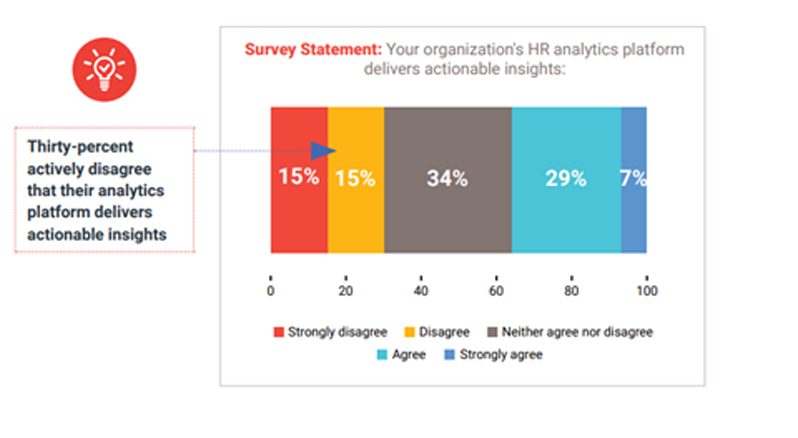
The eventual decision to build vs. buy hinges on the current maturity level of your company’s reporting architecture and whether the resources and domain knowledge required to fill in any gaps provide an adequate return on investment.
To visualize how building reporting capability in-house compares to opting for a product like SplashBI for HR, take a moment to go through this diagram and compare it with the current requirements of your organization.
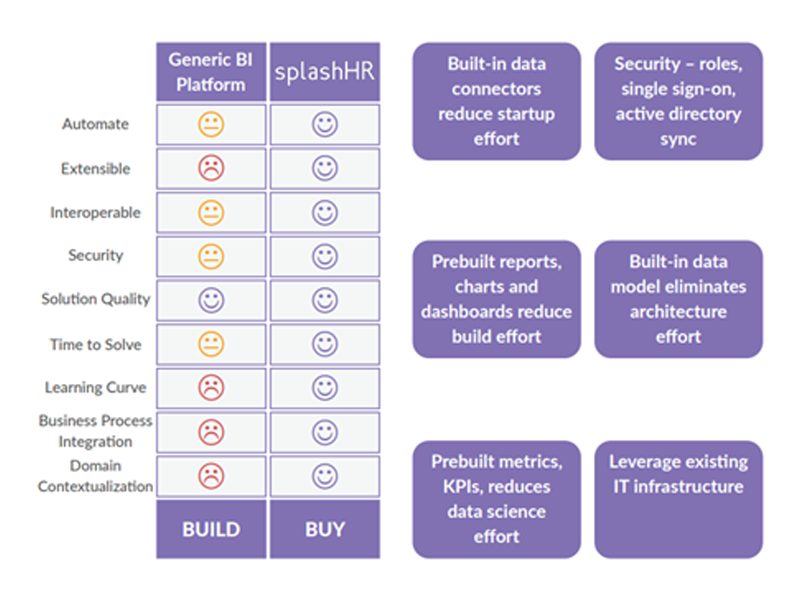
SplashBI for HR is a powerful way to consolidate, sift through massive data, and foster data-driven decisions across the HR function and the enterprise. By accessing all the data that you require from multiple sources, SplashBI for HR ensures insights are available to make evidence-based decisions, aligning with business targets and reporting objectives.
Preparing for CSRD is a journey that involves several strategic steps. By adopting a phased approach, fostering cross-departmental collaboration, leveraging existing data, and investing in the right tools with a long-term outlook, companies can not only ensure compliance with the CSRD but also use it as an opportunity to enhance their overall HR strategy and people culture.
SplashBI for HR Brings Ready Dashboards for CSRD Reporting
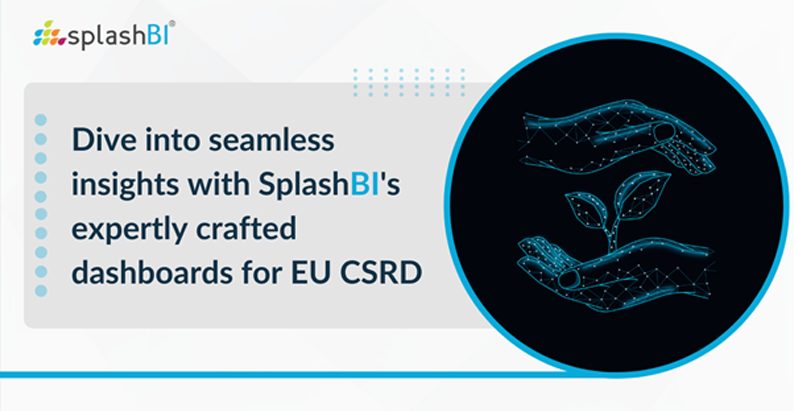
Just in time as far-sighted HR functions prepare their data strategy, architecture, and infrastructure for CSRD compliance, SplashBI for HR has introduced a unique, compliance-focused CSRD reporting dashboard. Ready to use, report, measure, and improve.
SplashBI for HR can help streamline your CSRD reporting with readymade dashboard templates and empower your organization to thrive in this new regulatory landscape.


